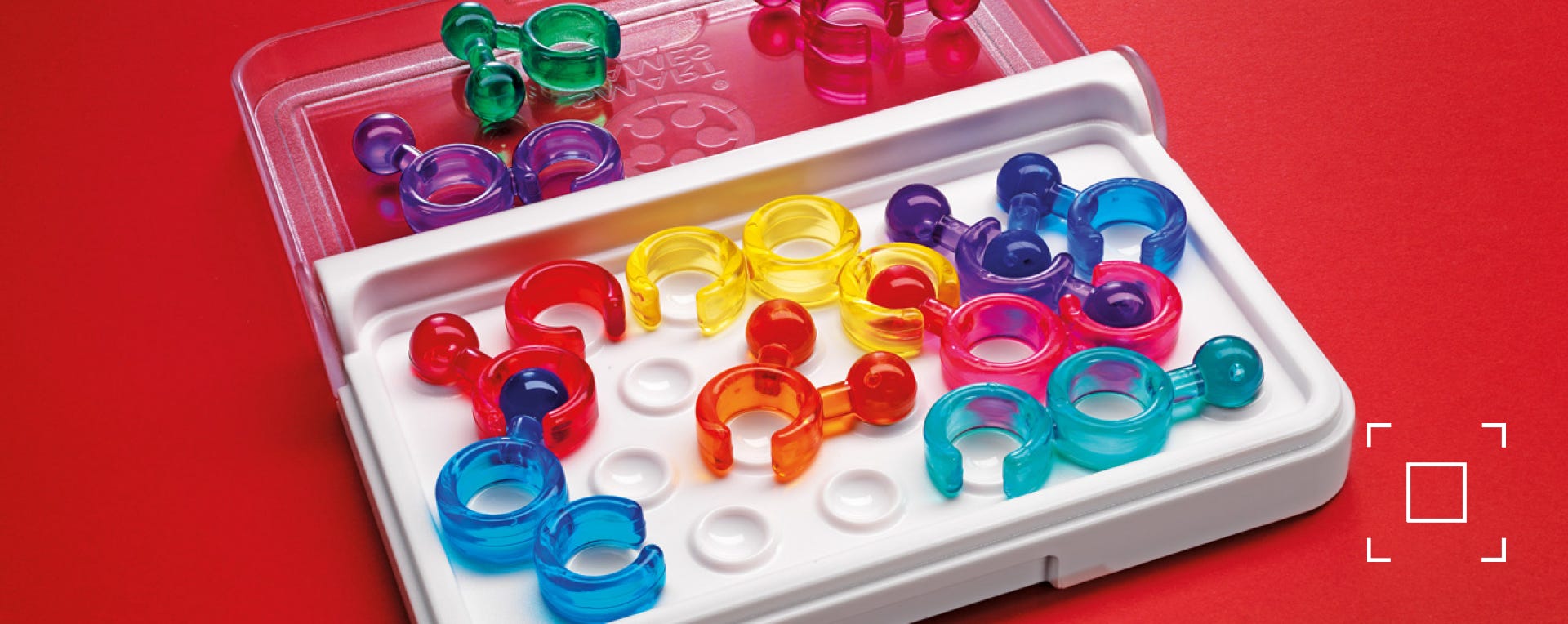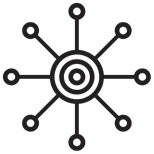
If you liked IQ-Twist or IQ-Fit, you will love IQ-Link. I leave it up to other people to judge if it’s the best IQ-puzzle I designed so far or not, but it’s definitely the best looking one. It almost seems like the puzzle pieces are jewels or are made of candy. Like all other SmartGames in this range, the object of the game is to make all puzzle pieces fit on the game board. But there is something about the puzzle pieces that makes this not as easy as it sounds. You have 36 puzzle segments but only 24 places on the grid!
MAKE THE CONNECTION
There are 12 puzzle pieces in this game and each puzzle piece is made from 3 segments:
• 6 segments are closed rings. These rings always occupy one place on the grid and don't allow any other segment to be placed there as well.
• 16 segments are balls.
• 14 segments are open rings.
You can place an open ring on the same place that is occupied by a ball of another puzzle piece, if the opening in the ring is in the same orientation as the part that connects the ball shape with the rest of the puzzle piece.
So the options to fill up the grid are theoretically:
• 2 empty spaces + 2 places occupied by 1 segment (2 balls) + 14 places occupied by two segments + 6 places occupied by the 6 closed rings
• 1 empty space + 4 places only occupied by 1 segment (3 balls and 1 open ring) + 13 places occupied by two segments + 6 places occupied by the 6 closed rings
• no empty spaces + 6 places only occupied by 1 segment (4 balls and 2 open rings) + 12 places occupied by two segments + 6 places occupied by the 6 closed rings.
Basically it comes down to this: you try to use each place on the grid in the most efficient way. The moment you see that you are creating too many empty places or places filled with only one puzzle segment, you know you better start over.
THE MISSING LINK
Each challenge has just one solution. When a challenge is solved, all puzzle pieces are connected to other puzzle pieces, creating one group of linked puzzle pieces. This way, the correct placement of one puzzle piece becomes a hint for the placement of the next one. Of all SmartGames I designed, this game has the most puzzle pieces, but because of the fact that they link to each other, you can solve many challenges using logic instead of trail and error. There are 120 challenges and 5 levels in this game. The STARTER and JUNIOR levels are really simple. You only need to place 2 or 3 puzzle pieces yourself. But in the hardest level, you start with just 1 or 2 puzzle piece on the grid. Personally, I couldn’t solve any of the challenges of the WIZARD level. I preferred the challenges of the EXPERT level which are not too easy or too hard and that I could solve in less than 5 minutes per challenge.
During setup, make sure that you place the puzzle pieces in the right orientation. If not, finding the solution will become impossible. Especially the yellow and orange pieces are sometimes placed with their openings in the wrong direction.
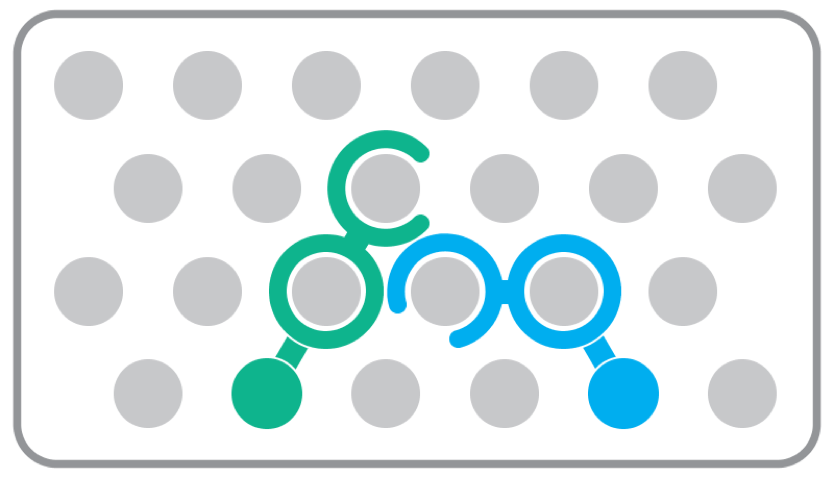
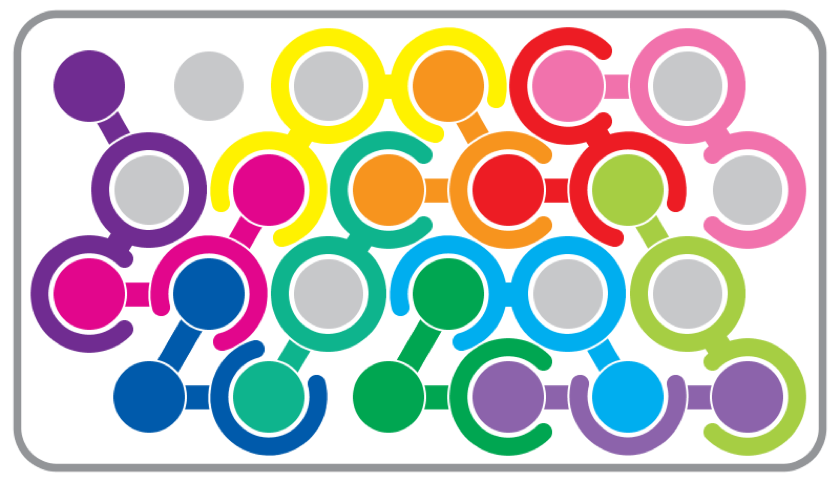
example of Wizard challenge (left) and solution (right) of IQ-Link
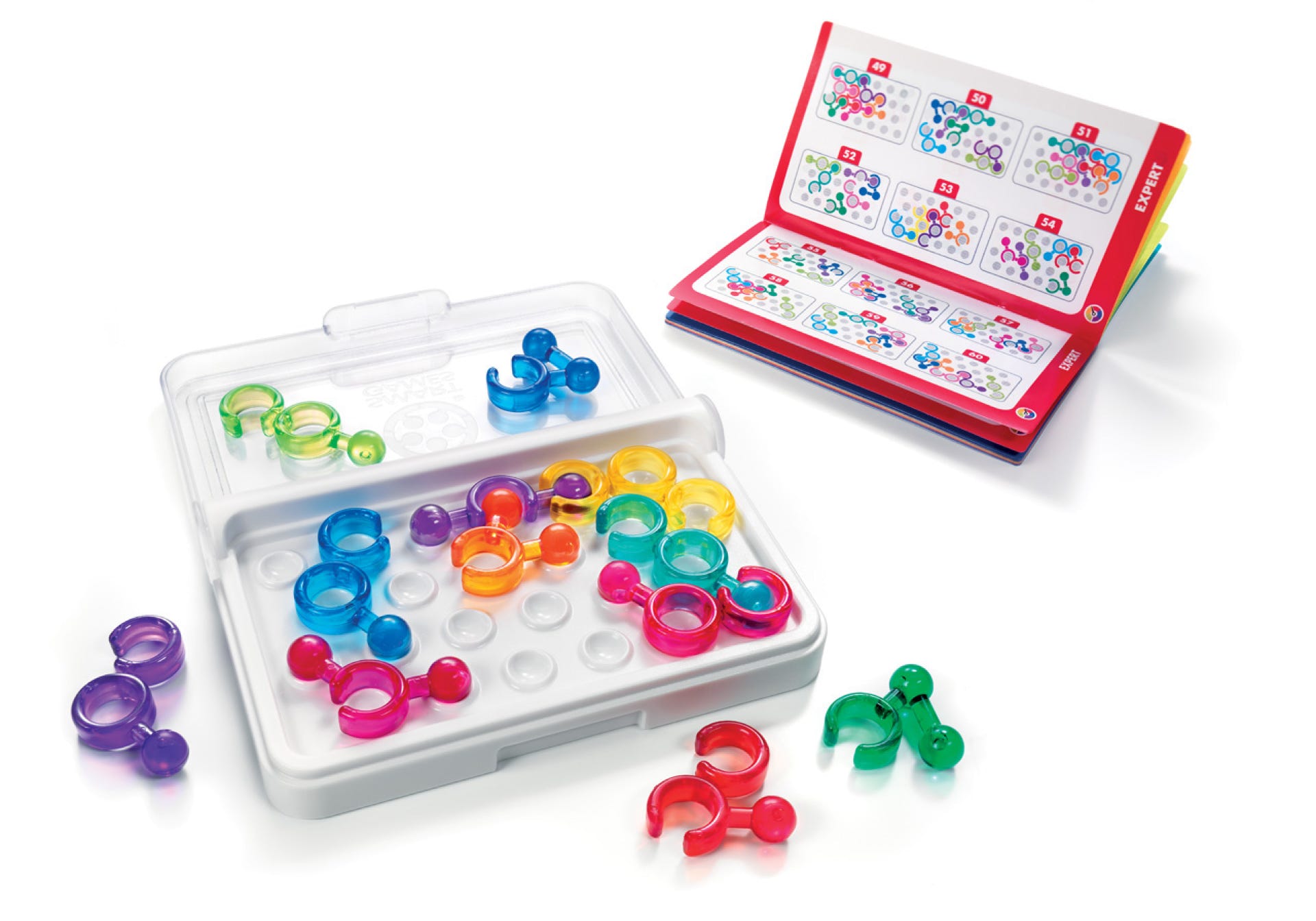
GAME RULES IQ-LINK
1) Choose a challenge and place the puzzle pieces as indicated.
2) Place all the remaining puzzle pieces on the game board:
• open rings and balls of different puzzle pieces can occupy the same space
• it is possible that some spaces on the grid remain empty or are occupied with only a ring or ball.
3) There is only one solution, which you can find at the end of the booklet.
Hint: In the solution all puzzle pieces will be linked to each other, resulting in 1 group of 12 connected puzzle pieces. The moment you place a puzzle piece on the grid that can’t be connected to any other or you create two separate groups of puzzle pieces, you know that you are on the wrong track. Puzzle pieces are considered as “linked” when they share at least one space on the game board with another puzzle piece.
Website ©2013 Raf Peeters
Products and images: © Smart
